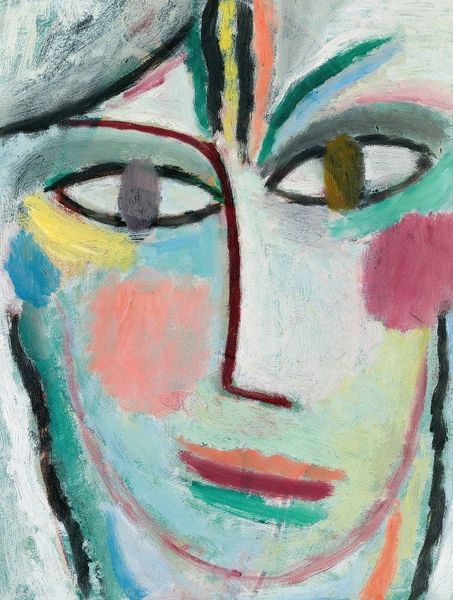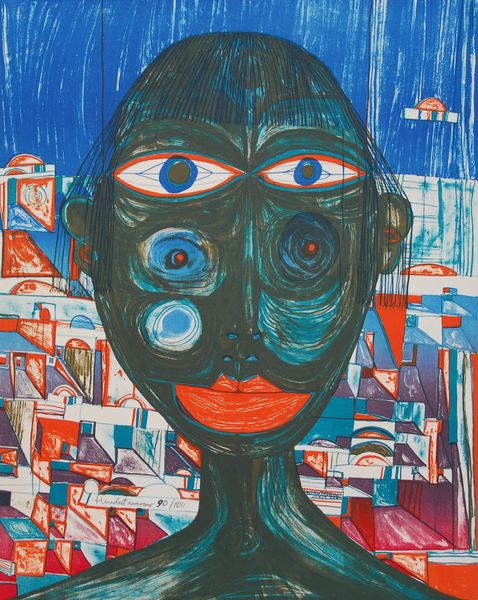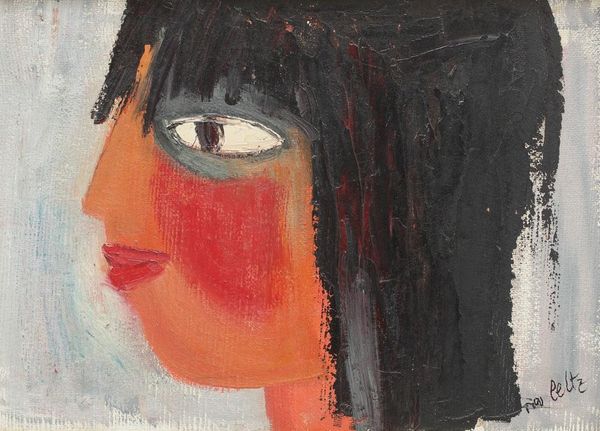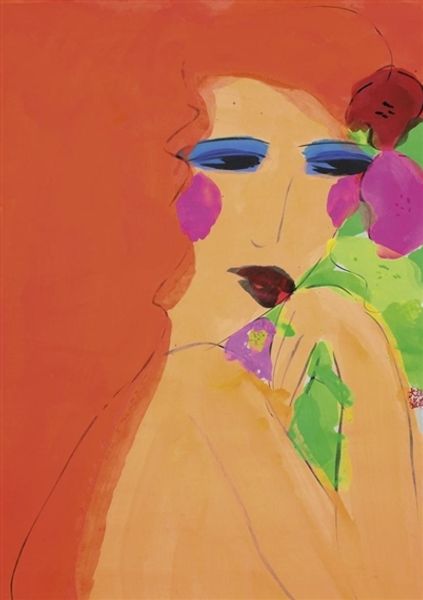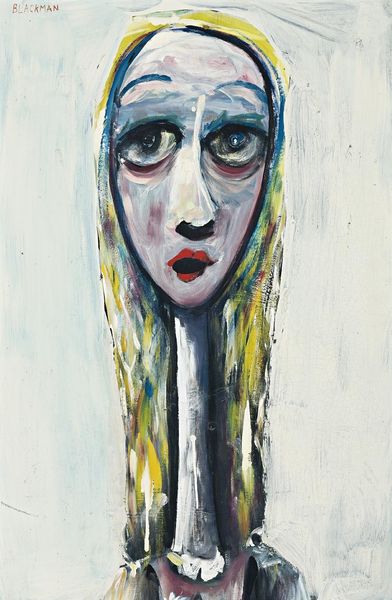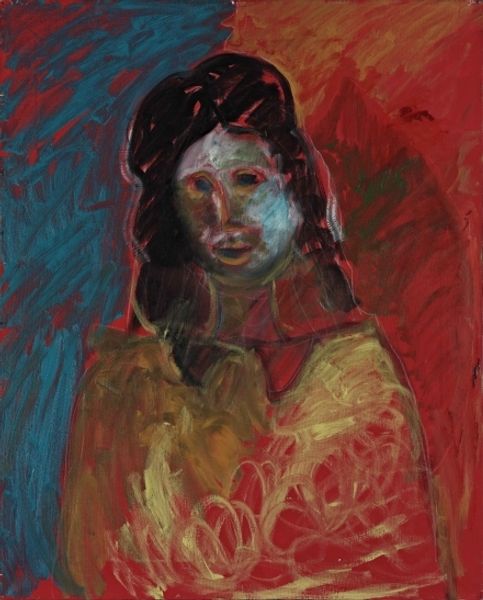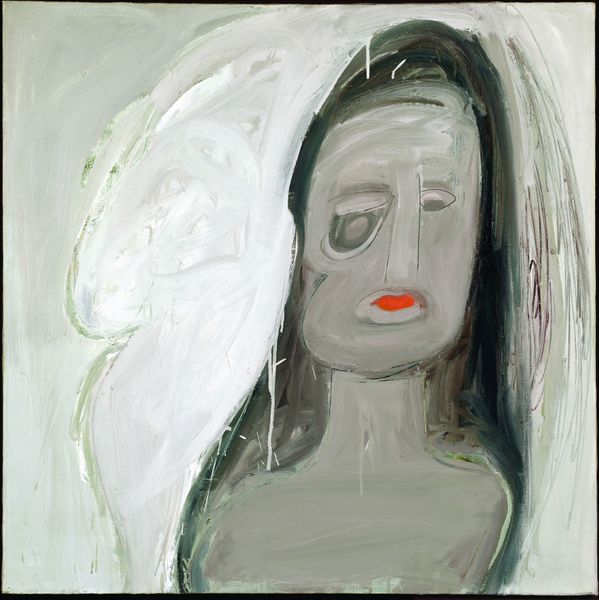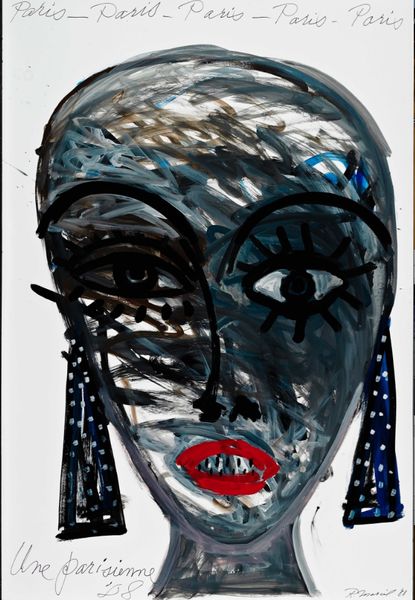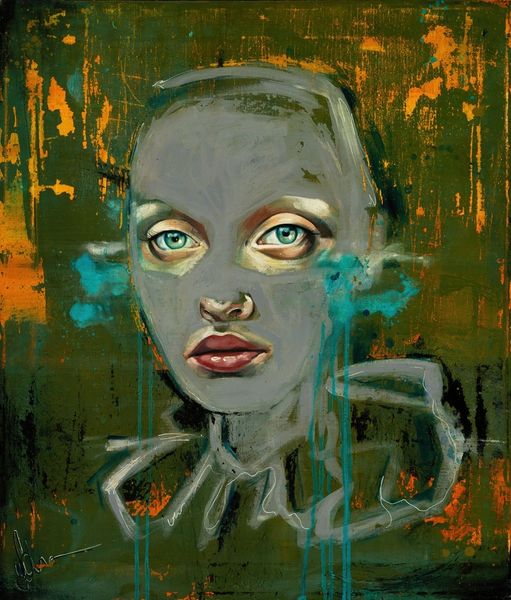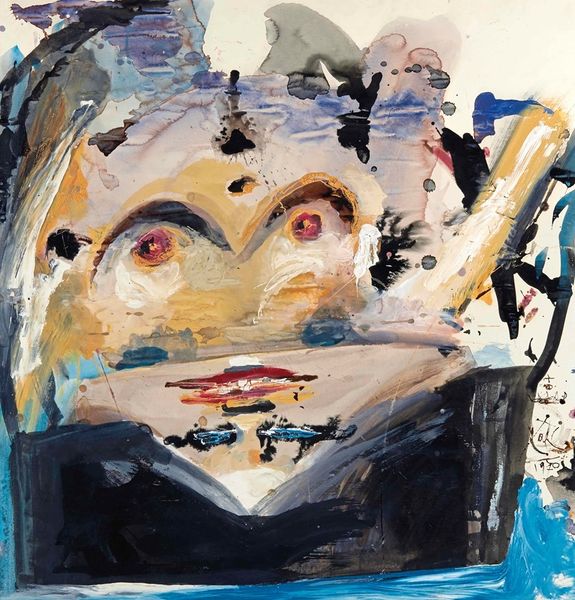
acrylic-paint
#
portrait
#
acrylic-paint
#
figuration
#
possibly oil pastel
#
neo expressionist
#
acrylic on canvas
#
neo-expressionism
#
line
Dimensions: 110 x 75 cm
Copyright: Patrimoine Marcil
Curator: Well, let's discuss Renè Marcil's "Goddess" from 1989, rendered with acrylic on canvas. Editor: My first impression? The vibrant blues against the softer pastels create an ethereal quality, yet there’s something disquieting in the direct, almost confrontational gaze. It’s raw and unapologetic. Curator: The confrontational gaze seems characteristic of the Neo-Expressionist movement of the time, a pushback against the minimalism that dominated prior decades. Artists sought a more personal, emotional language, challenging traditional academic training in favor of raw, intuitive expression. Editor: Exactly! And it’s not just about the gaze. Look at the line work. It’s crude, almost childlike, and the color palette, especially the bright red lips, speaks to an exploration of feminine identity beyond societal norms, reclaiming it, perhaps. It makes me wonder if it's referencing or critiquing established, idealized images of women. Curator: It is quite likely. The “Goddess” figure also brings to mind historical representation of women through the ages, so situating her in her time forces the question of which histories this depiction seeks to engage with. Are there traces, for instance, of Pop Art with its ironic takes on popular representation? Editor: I’d argue there’s an attempt at destabilizing cultural assumptions about women through visual cues. It goes further, maybe deconstructing not only cultural constructs, but making you, as the viewer, question how your perception of those expectations functions. The art piece, rather than settling on one approach, does the work of raising possibilities. Curator: So much of that dialogue hinges on context, both social and artistic, of course. How the role of galleries and collectors shaped such movements and the impact these images had in the broader public sphere is always an interesting avenue. Editor: Definitely. And it reminds us that visual languages constantly negotiate societal tensions, challenging power dynamics. Thinking through that intersection can create opportunities to decolonize the history of art. Curator: A fascinating perspective that contextualizes "Goddess" within broader sociopolitical concerns. Editor: Thanks! It's crucial to remember that art rarely exists in a vacuum.
Comments
No comments
Be the first to comment and join the conversation on the ultimate creative platform.
